
© Paul Kolnik. (Click image for larger version)
New York City Ballet
Balanchine Black and White Festival
Black and White II: Apollo, Agon, Duo Concertant, Symphony in Three Movements
New York, David H. Koch Theater
29 April 2015
www.nycballet.com
Back in Black (and White)
The New York City Ballet spring season is off to the races with a week devoted to George Balanchine, specifically the “black-and-white” ballets that for many have come to define his style. Stripped of overt story, sets and elaborate costuming, they represent a kind of essentializing of ballet in which the stage becomes a sophisticated playground of ideas about technique, the interaction of bodies and the relationship of movement to music, esthetics, style, art history. In this rarefied game, Balanchine found an ideal partner in Stravinsky, a composer equally fascinated by the interplay between past and present, the intricacies of counterpoint, the galvanizing effect of rhythm and accent.
Wednesday’s performance traced a particular strand of this conversation, which started when both were still working for Diaghilev’s Ballets Russes and continued even after Stravinsky’s death (in 1971), when Balanchine began using pre-existing Stravinsky works for his ballets. Apollo, the first work on Wednesday’s program, is also the earliest Balanchine ballet still in existence. Created in Paris in 1928, it partially predates the “black and white” esthetic; it tells a story of sorts and in its early versions it had sets and more elaborate, classically-inspired costumes. (The 1929 version was costumed by Coco Chanel, no less.) City Ballet performs the distilled and set-less 1979 revision, danced in white-skirted leotards for the Muses and white tights and a chest-baring top for Apollo.) But the impulse toward distillation and paring down was very much in evidence even in 1928. The steps are spare, the score is diaphanous, there is little obvious virtuosity, and the “story” of Apollo’s initiation is really more of an underlying idea than a series of plot-points.
Then there is Agon, a company favorite since its creation, in 1957. With Agon, Balanchine built upon the innovations of his earlier Four Temperaments (1946) – a thematic rather than narrative approach and a skewing of the classical lexicon. Feet are flexed, positions are off-balance, legs are splayed, bodies manipulated in odd ways. It’s an approach that veers toward acrobaticism and eroticism while still adhering to classical structures and drawing overtly from Baroque models (as Stravinsky did in the score).
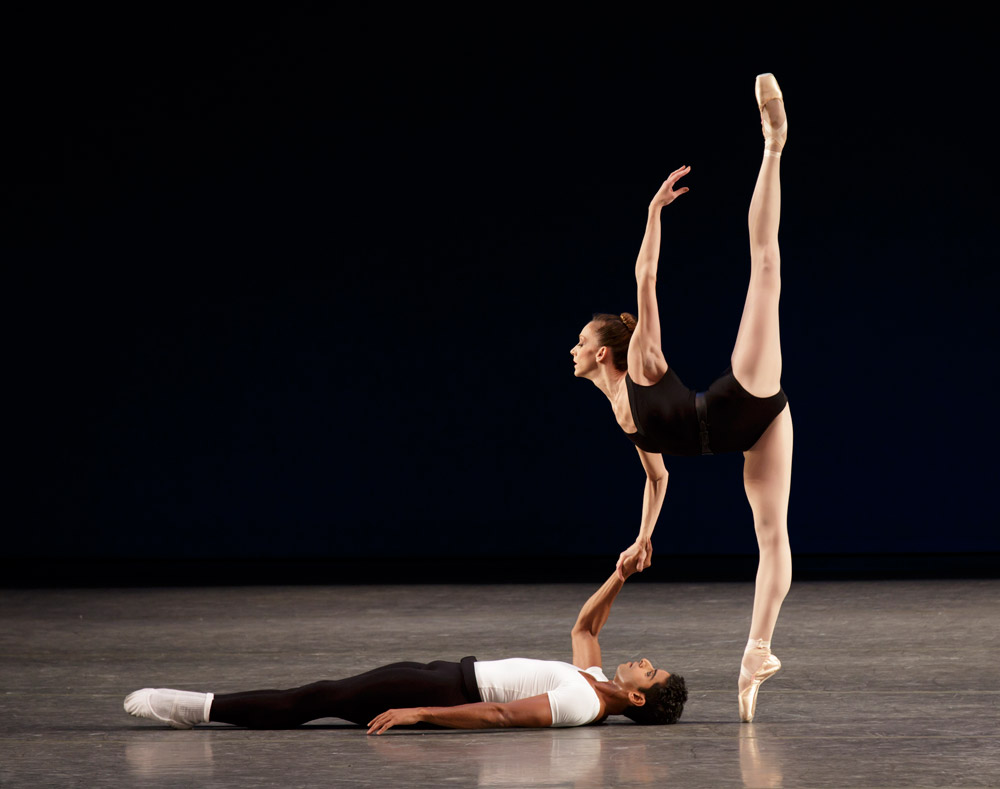
© Paul Kolnik. (Click image for larger version)
Maria Kowroski and Amar Ramasar have come to embody the company’s current approach to the famous pas de deux in Agon: brash, stylish, extreme. Kowroski can pull herself into impossible shapes; the audience gasps every time she leans over Ramasar’s prone body in a 180-plus degree arabesque split. When she curls her leg around him in an attitude, it traps him like a dragon’s tail. All of this is done perfectly matter-of-factly, with little fuss. Kowroski is the essence of cool. The ballet as a whole is well-performed, though Rebecca Krohn had some wobbles in the Bransle Gay and the two women in the Gailliard – Stravinsky used baroque dance forms as his inspiration – were not completely in sync. But perhaps the company performs Agon a little too often; it doesn’t have the same zing it had a few seasons ago. The more sparingly-performed Symphony in Three Movements, has a noticeably higher metabolism. The opening, a jumping competition between Erica Pereira and Daniel Ulbricht, is like a playground challenge: how high can they go?
The second half of the program – Duo Concertant and Symphony in Three Movements – revealed Balanchine’s later style, as exemplified by the ballets made for the 1972 Stravinsky Festival. By then, Balanchine was no longer experimenting so much as playing with elements of a technique and aesthetic he had invented. There was nothing shocking about Balanchine’s modernism at this point; he had brought his audience into his world. (This world then became the point of departure for choreographers like William Forsythe.) As a result, these ballets are characterized less by a feeling of urgency, and more by a sense of style. For all their differences – and the two ballets could not be more different – Duo and Symphony in Three are, each in its own way, quintessential New York ballets, glamorous, self-assured, un-apologetic.
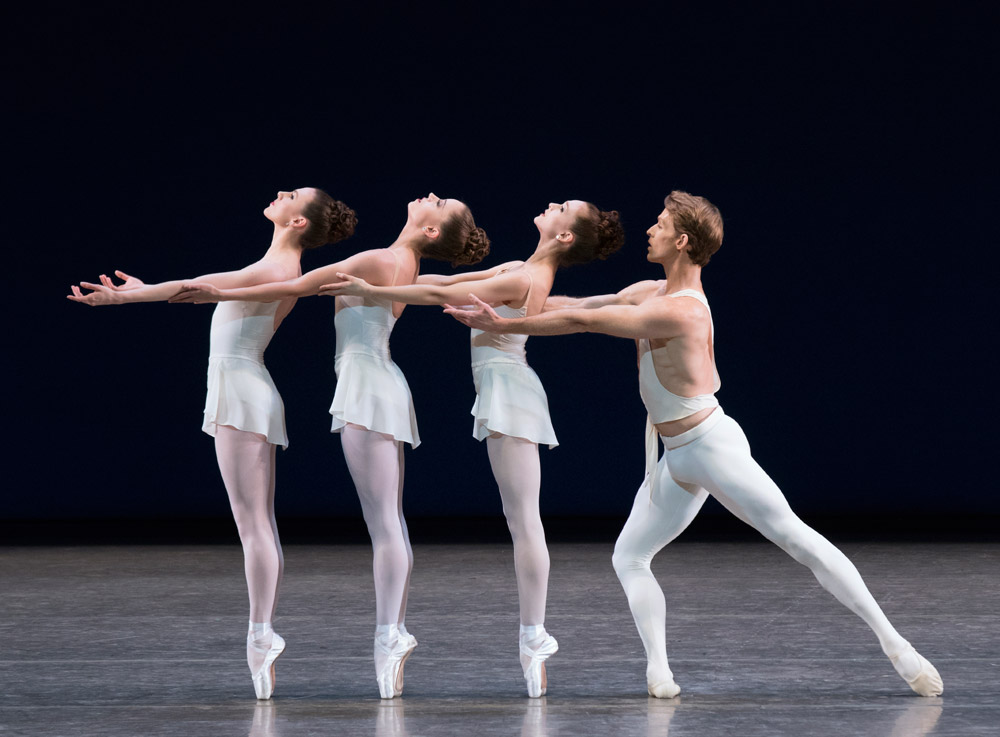
© Paul Kolnik. (Click image for larger version)
City Ballet, with its current crop of strong soloists and promising up-and-coming corps dancers, is completely at home in these works. As a result, the company can afford to experiment a bit with casting. Last night featured three débuts: Adrian Danchig-Waring and Ashly Isaacs in Apollo, Anthony Huxley in Duo Concertant. Each revealed promise, though only one felt like a perfect match of temperament and technique: Isaacs’ turn as Polyhymnia, muse of poetry. She’s strong, with powerful legs and a dynamic jump that bursts into the air with a whoosh. (Her split jumps are particularly impressive.) Isaacs’ musicality is confident, strongly accented. There’s a boldness and hunger to her dancing that makes one’s pulse race.
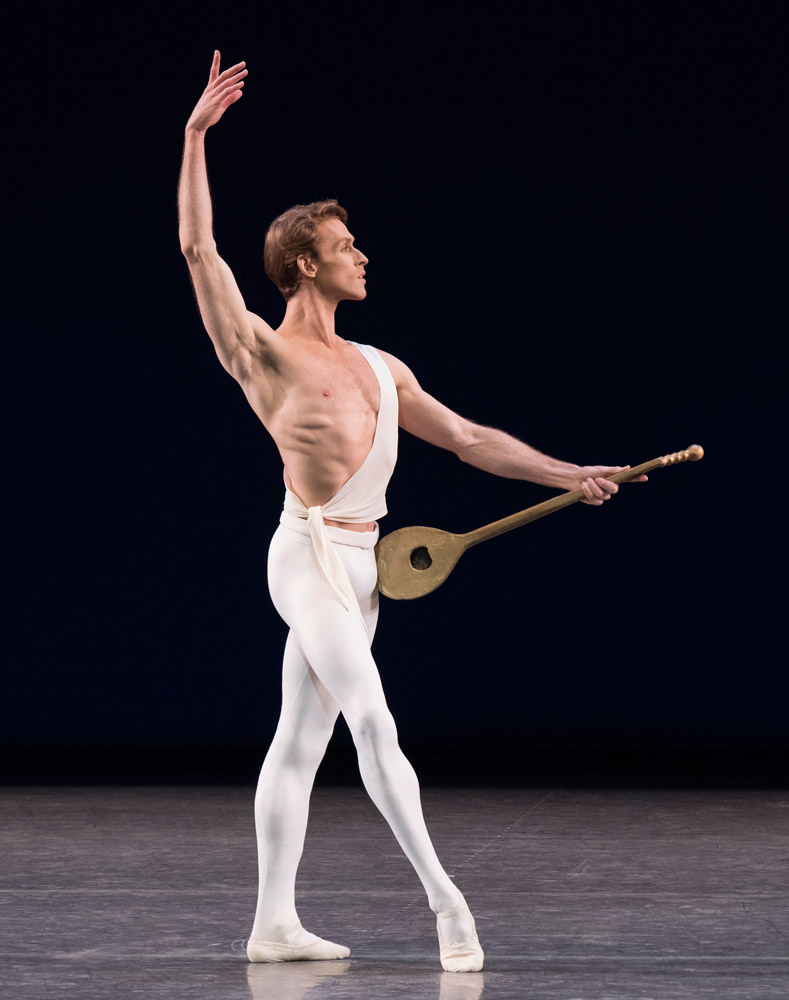
© Paul Kolnik. (Click image for larger version)
As Apollo, one can feel Adrian Danchig-Waring thinking through the choreography, making decisions about just how far to take each step, physically and musically. His interpretation is still in its early stages, which is to say he hasn’t quite become Apollo, not yet. He’s an extraordinarily flexible dancer, which allows him to push many of the shapes – the lunges and reaches and twists – further than others in this role. The sheer reach of his limbs energizes the air around his fingertips and hyper-extended legs. There’s not much development in his interpretation of Apollo, though: he’s too remote and contained at the start of the ballet, and his interactions with Terpsichore (Tiler Peck) lack spark or wonder. (In a way, the ballet is about discovery: first, Apollo discovers his own body, then he discovers his personal tastes, and finally he discovers the wonder of affinity with another being.) Peck, wonderfully musical as always, was uncharacteristically shut-off, closed in her own world. I wonder if Terpsichore is too restrained a role for her at this point? In Danchig-Waring’s interpretation one senses understanding that has yet to blossom into feeling. Check back in a year.

© Paul Kolnik. (Click image for larger version)
The evening’s performance of Duo Concertant suffered from a case of poor matchmaking. This playful, tender pas de deux can be either miraculous or uncomfortably artificial: it all depends on casting. Huxley, slight and delicate as an adolescent boy, moves like a saltimbanque – quietly, lyrically, liquidly. Each step unspools with beautiful, almost persnickety precision. Therein lies the problem – he’s still a cipher. In solos, he comes into his own; with a partner, despite scrupulous partnering, he has a tendency to disappear. In contrast, Ashley Bouder is a pint-sized powerhouse, all sharp accents and darting jumps, brilliant and emphatic. She rather overpowers Huxley, and the ephemeral poetry of the ballet is lost.
Symphony in Three is always invigorating: those long diagonals of women in white leotards, arranged like arrows in a quiver, the slashing legs, bouncy jogs and flying pony-tails. Its rhythms, which veer from warlike slashes to jazzy syncopations, are irresistible. (I often find myself jiggling in my seat and have to remind myself to settle down.) On this night the orchestra, under the baton of Clotilde Otranto, was in fine form. Stravinsky referred to this 1946 work as his war symphony: one can almost see the advancing tanks and feel the explosions of mortar rounds. But it’s a war in the mind – formal and spectacular – not a visceral slog like Shostakovich’s Seventh Symphony.

© Paul Kolnik. (Click image for larger version)
The andante in the middle is something else completely, a delicate, almost effete interlude for flute and strings, to which Balanchine responded with a pas de deux of extraordinary refinement and exoticism. The two partners – Sterling Hyltin and Taylor Stanley – become creatures from a strange land, not quite human. They approach each other sideways with undulating arms, and intersect in convoluted shapes, touching only with the tips of their fingers. At one point, they face the audience, bending and straightening in place, opening their arms as if swimming across the empty space above the orchestra. Hyltin, with her delicate arms and linear figure, teases the audience with the odd, ornamental qualities of the choreography – attitudes on bent legs with flexed feet, turned-in-knees, flat positions in which her arms are bent at a 90 degree angle, with palms held forward. She lays bare the artifice of the choreography without ever turning it into a cartoon. In the same spirit, Taylor Stanley takes on the air of an amused esthete, twisting his wrists and caressing the tips of her fingers, practically licking his chops with excitement.
After all, it’s the wit and playfulness of these ballets that keeps them fresh. They’re not simply exercises in style – that would be a bore – but eternally clever dialogues. In them, the lifelong conversation between Balanchine and Stravinsky lives on.













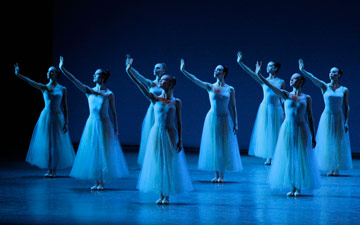
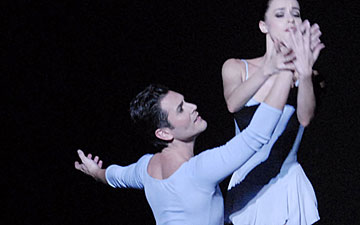

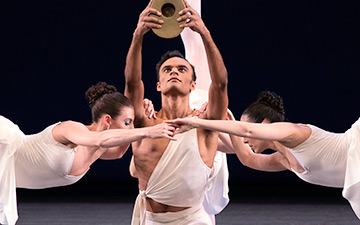
You must be logged in to post a comment.